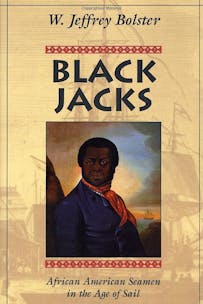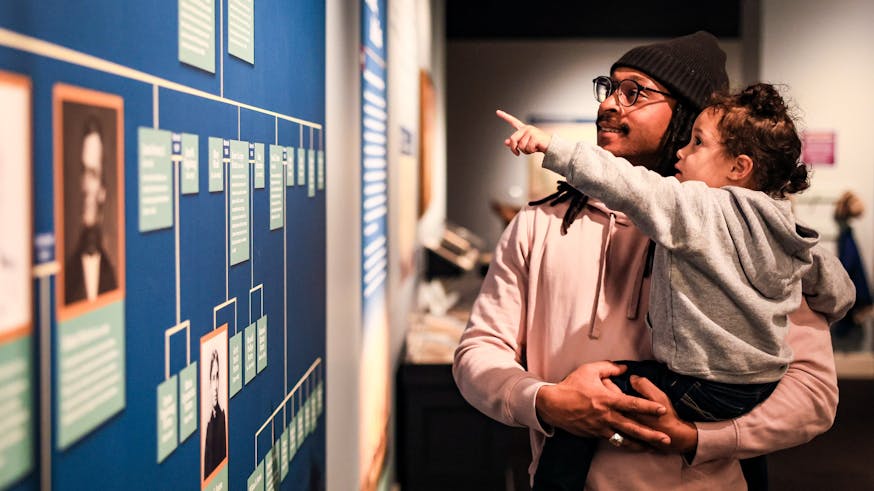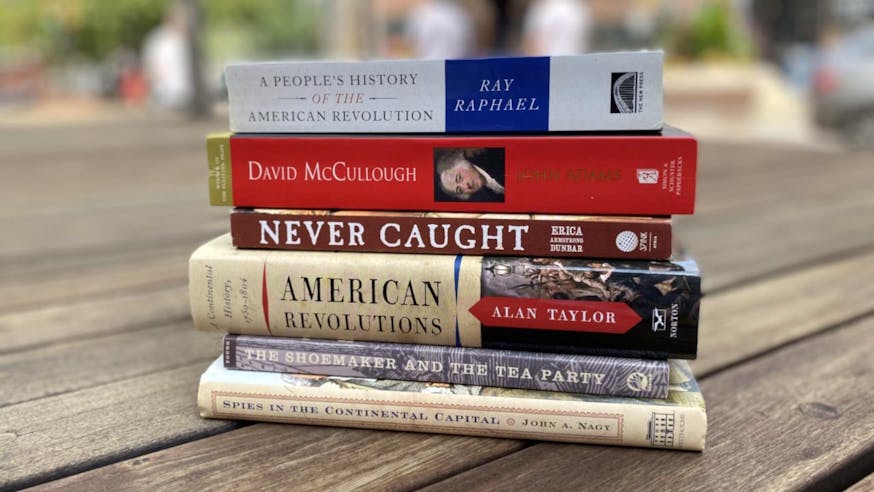Read the Revolution
Black Jacks
April 19, 2023
Purchase the book from Harvard University Press.
James Forten never forgot his time at sea during the Revolutionary War, and his service aboard a privateer, his sufferings as a prisoner-of-war, and his work as a master sailmaker shaped the rest of his life. But he was far from the only American of African descent to set sail in the Revolutionary era. When he stepped aboard the Royal Louis in 1781, Forten was following in the footsteps of thousands of free and enslaved sailors.
In Black Jacks: African American Seamen in the Age of Sail, historian W. Jeffrey Bolster explores the lives of Black sailors in the period between 1740 and 1865. Life at sea exposed Americans from all walks of life to new places and forced them to work alongside people from very different backgrounds. Bolster uncovers how, for men of African descent, the mobility and freedom of sailing allowed them to see the world and serve as conduits of news and information for their home communities. In the excerpt below, he examines the opportunities presented to men like Forten when they first climbed down into their cramped shipboard quarters and met their new shipmates.
Excerpt
Race relations had their own logic aboard deep-sea ships. Hoary shipboard traditions and a rigid shipboard hierarchy did not have as much place for race as the customs associated with many occupations ashore. Seafaring’s punctiliousness provided structure and rules for groups of men confined in exceptionally small spaces, often for long periods of time, and maintaining the rules gave each man a form of personal armor in a world in which he had little privacy. Aboard ship, social relations were not determined primarily by technology, tradition, or the challenges of the marine environment; they were made by men with vested interests in a certain social order that, coincidentally, did not depend on race for its perpetuation.
Sailors by no means succumbed without resistance to the wishes of those in authority, whether captains or shipowners. Should civil authorities in Boston looking to arrest a sailor send "constables to Search Ships," wrote Captain Hector McNeill, “from what I know of Seamen … such a man on such an errand would likely to Loose his life or some of his Limbs, rather than find the person he was in pursuit of.” Nonetheless, merchants’ demand for obedience, codified in Admiralty law and in local statutes, meant that shipboard life and Atlantic maritime culture evolved around the concept of order—no matter how contested. Today our language retains the image “shipshape” as one of compulsive orderliness.
The shipboard order in which late-eighteenth- and early-nineteenth-century black and white sailors found themselves was maintained through a precise “distinction of role and status.” The ship’s articles, or contract, that each man signed indicated his position (mate, second mate, carpenter, cook, seaman, ordinary seaman, “boy,” or inexperienced hand, and so on), almost immutably fixing his status on board. Boundary maintenance—between officers and men, larboard and starboard watches, idlers, and watchstanders, skilled and greenhands—was the essence of life aboard ship, for boundaries delineated privileges, prerequisites, and punishments. Although formal boundaries could flex to accommodate human relationships, they never entirely broke down, and they essentially defined the social combinations and conflicts at the heart of seafaring life. Racial boundaries certainly existed, but they were often secondary to those established by the institution of the ship.
Sign Up
Get biweekly Read the Revolution excerpts right to your inbox.
For a black man, then, ships provided a workplace where his color might be less a determinant of his daily life and duties than elsewhere. At Nooaheevah in 1813, four American sailors deserted together from the frigate Essex—a black man named Isaac Coffin and three of his white shipmates. Coffin was then “a prisoner for attempting the second time to make his escape,” according to Captain John M. Gamble, but his shipmates freed him before they absconded together “in a whaleboat.” Whether asserting themselves in the spaces allocated to them aboard ship or fleeing oppression, African American men found considerable maneuvering room in maritime society. This is clear from John Wilson’s responses in a United States Circuit Court. Wilson had sailed in 1819 with Captain Henry Ford of Baltimore, the commander of a privateer under the flag of the Oriental Republic of La Plata, one of the breakaway South American colonies then struggling against Spain and Portugal.
Question: In what capacity did the black men serve on board the schooner?
Answer: They fought the same as the rest of the crew when they engaged a Portuguese Schooner, and did duty as the rest of them.
Question: When any Goods were given to the crew for clothing, did not the Black men receive the same as the rest?
Answer: The Black men received the same as the other part of the crew.
No less indicative of the fact that a seaman’s billet meant more than his race were the innumerable Yankee ships on which black men before the mast ranked higher and earned more than their white shipmates. The best-paid sailor aboard the Rhode Island brig Mary sailing to Cuba in 1819 was Cato Burrill, a black veteran of twenty-five years at sea. On the brig John in 1806, each of the seamen—one black, one white, one mulatto—earned $18 per month, whereas the white cook and the white ordinary seaman each earned only $14. The historical precedent arising from such black men’s experiences and their shipmate’ respect contributed to Herman Melville’s introduction of a manly black as the archetypal handsome sailor: “the center of a company of his shipmates,” he was “on every suitable occasion always foremost.”
The anonymity of working for wages and the protection available to blacks from the prevailing shipboard hierarchy provided modest opportunities for men of color. Late-eighteenth- and early-nineteenth-century seafaring occupied a transitional position in the evolution of labor management from traditional to paternalistic forms of bound labor to newer contractual forms of wage labor. This often worked to the advantage of black men, especially toward the turn of the century. As waged workers rather than bound ones, sailors and would-be sailors were among a constantly changing pool of applicants for available berths. This allowed free black men (or those claiming to be free) to come aboard shops on a similar footing with transient and inexperienced white workers.
W. Jeffrey Bolster, Black Jacks: African American Seamen in the Age of Sail (Cambridge and London: Harvard University Press, 1997), 74-77.
Tags
Learn More

Black Founders: The Forten Family of Philadelphia
February 11 - November 26, 2023
A Gentleman of Color
